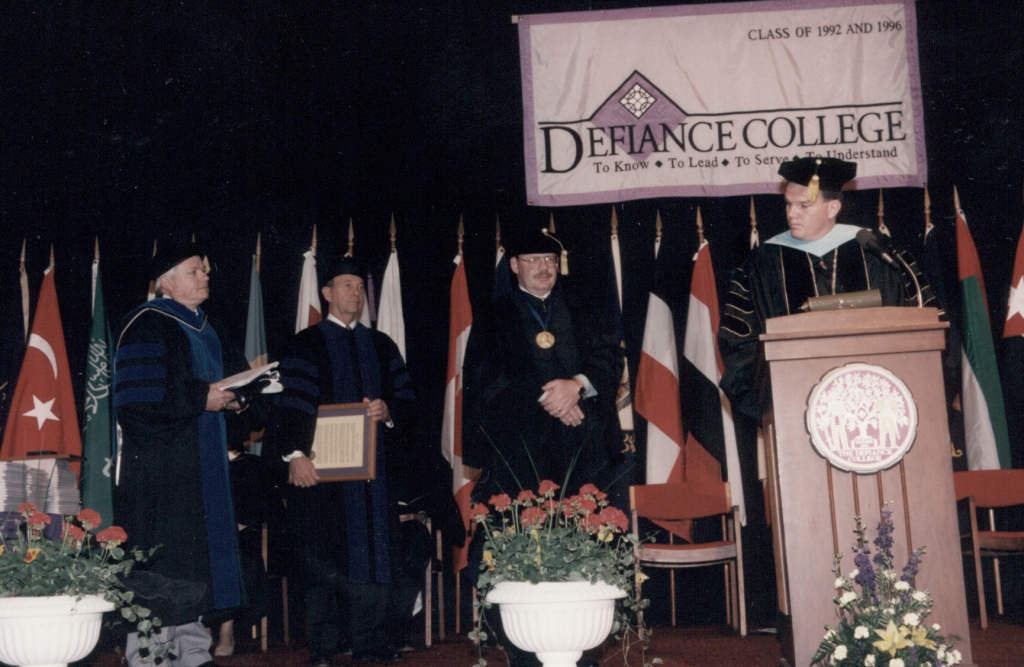
News media websites today reported the death of Terry Anderson, an Associated Press journalist held for seven years as a hostage in Lebanon, from 1985-1991. After his release, in 1996, Defiance College invited Anderson to be our Commencement speaker, when he also received an honorary degree. The ceremony was to be held in the stadium but rainy weather forced a move into the Weaner Center. The above photo is Anderson speaking to the crowd.
Here he is being awarded the honorary degree:

At left is Dean Richard Stroede, probably a trustee (?), Anderson, and President James Harris at the podium.
Anderson had published his memoir, Den of Lions, two years before, and his address to DC graduates used the same title. The Crescent-News article published May 6, 1996 reported that Anderson’s speech congratulated the graduates on their achievement, and reminded them that a diploma does not mean the end of learning, it’s only a beginning, and that “Defiance College has given you the tools to educate yourself.” Anderson gave a press conference earlier in the day, and there talked about how he sustained himself through his long captivity by talking to, learning from, and praying with his fellow captives. He considered himself a Christian and did not permit himself to be bitter about his experience.
Here is Anderson before the ceremony with President Harris. The vacated Anthony Wayne Library is in the background, before it was renovated into Hubbard Hall:

And below is Anderson on the left, about to shake hands with Professor Dick Howard, with Prof. Dale King in the middle:

Wikipedia says that Anderson worked as an academic teaching journalism at various universities in his later life, and performed philanthropic work.
Barb Sedlock
Lead Librarian and Coordinator of Metadata and Archives














